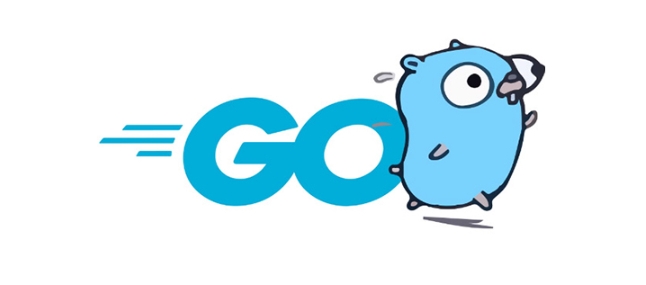go vet catches common logical errors and suspicious constructs in Go code such as 1) misuse of printf-style functions with incorrect arguments, 2) unkeyed struct literals that may lead to incorrect field assignments, 3) sending to closed channels which causes panics, 4) ineffective assignments due to value receivers, 5) invalid struct tags like unknown options in JSON tags, 6) unused return values from functions meant to be checked, and 7) variable shadowing in inner scopes; it is run via go vet . or on specific files, integrates into CI/CD, editors, and pre-commit hooks, and is conservative in reporting only high-confidence issues, making it a reliable tool for improving code quality before runtime.

go vet is a static analysis tool that comes with the Go programming language. It examines Go source code and reports suspicious constructs, such as incorrect function calls, unreachable code, misuse of struct tags, and other common programming mistakes — before you run the program.

It doesn’t catch syntax errors (that’s the compiler’s job), but instead focuses on logical errors and misuse of APIs that might compile fine but lead to bugs at runtime.
What kind of issues does go vet catch?
Here are some common problems go vet can detect:

-
Misuse of printf-style formatting functions
For example, passing the wrong number or type of arguments tofmt.Printf.fmt.Printf("%s", 42) // warns: arg 42 is int, expected string Unkeyed struct literals
If a struct changes, unkeyed literals can silently assign values to wrong fields.
type Person struct { Name string Age int } p := Person{"Bob", 30} // go vet warns: unkeyed fieldUse of closed channels
Sending on a closed channel causes a panic;go vetflags suspicious channel operations.Ineffective assignments
Like assigning to a variable inside a function but not modifying the original (common with methods on value receivers).Struct tag mistakes
Invalid struct tags (e.g., in JSON, XML, or DB tags) are flagged.type User struct { Name string `json:"name"` ID int `json:"id,omitempty,invalid"` // warns: unknown option 'invalid' }Unused return values
Some functions return values for a reason — ignoring them might be a bug.Shadowed variables
When a variable inside a inner scope has the same name as one in an outer scope, it can lead to confusion.if x := someFunc(); x > 0 { // ... } else { x := 42 // shadows previous x; go vet can warn about this }
How to use go vet
Run it from the command line:
go vet .
This checks all Go files in the current directory and subdirectories.
You can also target specific packages or files:
go vet mypackage/ go vet main.go
For more detailed output, use:
go vet -v .
Integration with workflows
-
CI/CD pipelines: Run
go vetas part of your build process to catch bugs early. -
IDEs and editors: Tools like VS Code (with Go extension), GoLand, or Vim with plugins often run
go vetautomatically. - Pre-commit hooks: Use it to prevent questionable code from being committed.
Note: go vet is conservative
It only reports issues it’s very confident about. That means:
- It won’t catch every possible bug.
- But what it does report is usually worth fixing.
Basically, go vet is like having a helpful coworker who reviews your Go code and points out subtle mistakes you might have missed. It's a quick, reliable way to improve code quality and avoid common pitfalls.
The above is the detailed content of what does go vet do. For more information, please follow other related articles on the PHP Chinese website!

Hot AI Tools

Undress AI Tool
Undress images for free

Undresser.AI Undress
AI-powered app for creating realistic nude photos

AI Clothes Remover
Online AI tool for removing clothes from photos.

Clothoff.io
AI clothes remover

Video Face Swap
Swap faces in any video effortlessly with our completely free AI face swap tool!

Hot Article

Hot Tools

Notepad++7.3.1
Easy-to-use and free code editor

SublimeText3 Chinese version
Chinese version, very easy to use

Zend Studio 13.0.1
Powerful PHP integrated development environment

Dreamweaver CS6
Visual web development tools

SublimeText3 Mac version
God-level code editing software (SublimeText3)

Hot Topics
 A Guide to Go's Templating Engine
Jul 26, 2025 am 08:25 AM
A Guide to Go's Templating Engine
Jul 26, 2025 am 08:25 AM
Go's template engine provides powerful dynamic content generation capabilities through text/template and html/template packages, where html/template has automatic escape function to prevent XSS attacks, so it should be used first when generating HTML. 1. Use {{}} syntax to insert variables, conditional judgments and loops, such as {{.FieldName}} to access structure fields, {{if}} and {{range}} to implement logical control. 2. The template supports Go data structures such as struct, slice and map, and the dot in the range represents the current iterative element. 3. The named template can be defined through define and reused with the template directive. 4.ht
 Integrating Go with Kafka for Streaming Data
Jul 26, 2025 am 08:17 AM
Integrating Go with Kafka for Streaming Data
Jul 26, 2025 am 08:17 AM
Go and Kafka integration is an effective solution to build high-performance real-time data systems. The appropriate client library should be selected according to needs: 1. Priority is given to kafka-go to obtain simple Go-style APIs and good context support, suitable for rapid development; 2. Select Sarama when fine control or advanced functions are required; 3. When implementing producers, you need to configure the correct Broker address, theme and load balancing strategy, and manage timeouts and closings through context; 4. Consumers should use consumer groups to achieve scalability and fault tolerance, automatically submit offsets and use concurrent processing reasonably; 5. Use JSON, Avro or Protobuf for serialization, and it is recommended to combine SchemaRegistr
 How to pass a slice to a function in Go?
Jul 26, 2025 am 07:29 AM
How to pass a slice to a function in Go?
Jul 26, 2025 am 07:29 AM
When passing slices in Go, it is usually passed directly by value, because the slice header contains a pointer to the underlying array, and copying the slice header will not copy the underlying data, so the modification of elements in the function will affect the original slice; 1. If you need to reassign or adjust the slice length within the function and make the change take effect, you should pass the slice pointer; 2. Otherwise, you can pass the slice directly without using a pointer; 3. If reallocation may be triggered when using append, you must pass through the pointer to make the updated slice visible to the outside. Therefore, unless the entire slice is to be replaced, the slice should be passed in the form of a value.
 what does go vet do
Jul 26, 2025 am 08:52 AM
what does go vet do
Jul 26, 2025 am 08:52 AM
govetcatchescommonlogicalerrorsandsuspiciousconstructsinGocodesuchas1)misuseofprintf-stylefunctionswithincorrectarguments,2)unkeyedstructliteralsthatmayleadtoincorrectfieldassignments,3)sendingtoclosedchannelswhichcausespanics,4)ineffectiveassignment
 how to handle signals go by example
Jul 25, 2025 am 04:36 AM
how to handle signals go by example
Jul 25, 2025 am 04:36 AM
Use signal.Notify() in the os/signal package to register the specified signal (such as SIGINT, SIGTERM) into the buffer channel, so that the program can be captured instead of terminated by default; 2.
 How to use reflection in Go?
Jul 28, 2025 am 12:26 AM
How to use reflection in Go?
Jul 28, 2025 am 12:26 AM
Usereflect.ValueOfandreflect.TypeOftogetruntimevaluesandtypes;2.Inspecttypedetailswithreflect.TypemethodslikeName()andKind();3.Modifyvaluesviareflect.Value.Elem()andCanSet()afterpassingapointer;4.CallmethodsdynamicallyusingMethodByName()andCall();5.R
 How to embed a file into a string in Go?
Jul 26, 2025 am 05:40 AM
How to embed a file into a string in Go?
Jul 26, 2025 am 05:40 AM
To embed the file contents into the string of the Go program, you should use go:embed (Go1.16) to embed the file at compile time; 1. Add the //go:embed directive above the target variable; 2. Ensure the file path is correct and the file exists; 3. Use string type variables to receive text content; 4. Build the project through gobuild to include the file content. This method is safe and efficient and does not require additional tools, and ultimately implements the file contents directly into the binary file as strings.
 go by example http middleware
Jul 26, 2025 am 09:36 AM
go by example http middleware
Jul 26, 2025 am 09:36 AM
In Go language, HTTP middleware is implemented through functions, and its core answer is: the middleware is a function that receives and returns http.Handler, used to execute general logic before and after request processing. 1. The middleware function signature is like func (Middleware(nexthttp.Handler)http.Handler), which achieves functional expansion by wrapping the original processor; 2. The log middleware in the example records the request method, path, client address and processing time-consuming, which is convenient for monitoring and debugging; 3. The authentication middleware checks the Authorization header, and returns 401 or 403 errors when verification fails to ensure secure access; 4. Multiple middleware can be nested to adjust







